Pixel 9 Pro XL vs Pixel 8 Pro: Main differences
We may earn a commission if you make a purchase from the links on this page.
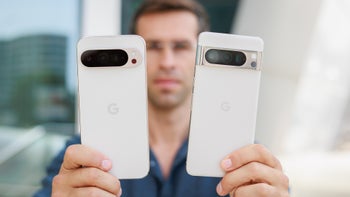
Intro
This year's Pixel came earlier than usual, but we are not complaining: it's one of the best new Android phones out there. And rightly so––Google hasn't cut any corners this time around, coming up with a phone that tries to be a jack-of-all-trades.
The fresh Pixel 9 Pro XL is actually the successor to last year's Pixel 8 Pro as the large and undisputed top flagship phone in Google's arsenal. It delivers a host of notable upgrades here and there that surely make the new phone a worthy upgrade, especially for those who come from older Pixels, like the Pixel 4, Pixel 5, and even Pixel 6 Pro.
How does the Pixel 8 Pro compare to the Pixel 9 Pro XL, and should you feel the creeping buyer's regret?
Google Pixel 9 Pro XL vs Pixel 8 Pro differences:
| Pixel 9 Pro XL | Pixel 8 Pro |
|---|---|
| Slightly, taller, thicker, and heavier | An overall more compact phone |
| New design with flat sides and standalone camera island at the back | Curvier design with an edge-to-edge rear camera island |
| A larger 6.8-inch OLED display with 1-120Hz refresh and 3,000-nit peak brightness | A slightly smaller 6.7-inch OLED screen with 120Hz refresh rate and 2,400-nit peak brightness |
| A 50MP+48MP+48MP camera setup with software enhancements | Generally the same triple camera setup (50MP+48MP+48MP) |
| New 42MP front-facing camera | A 10.5MP selfie camera |
Read more:
Design and Size
Notable differences
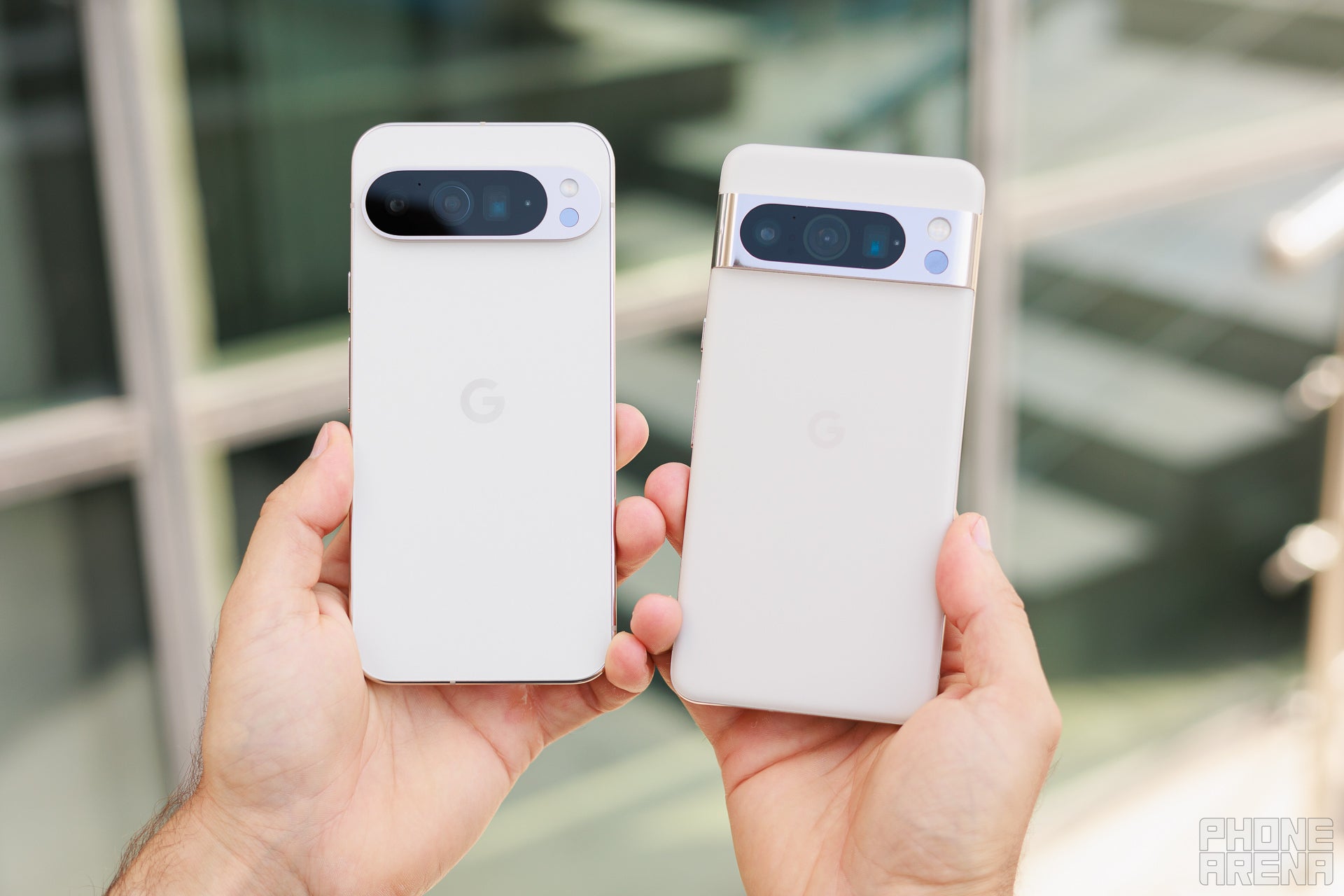
The Pixel 9 Pro XL stuns with its more premium design (Image by PhoneArena)
The Pixel 9 Pro XL scores a major redesign, probably one of the biggest in the history of the Pixel. Gone are the slightly curved side frame which boosted ergonomics; instead, we get a fully flat design that's quite similar to what you get with most of the recent iPhone or the Galaxy S24 and Galaxy S24 Plus.
The Pixel 9 Pro XL is also bigger on all fronts: it's taller, wider, and thicker than the Pixel 8 Pro; it's also heavier. The differences aren't that grand, but they are certainly worthy of a mention. Pair those new dimensions and weight with the flatter design, and you will get a device that might not be as comfortable to use as the Pixel 8 Pro.

Ergonomics are arguably better on the older device (Image by PhoneArena)
Another big change, but merely from a stylistic perspective, is also found at the back: the Pixel 9 Pro XL gets a new camera island at the rear, which no longer goes side to side, but exists as its own entity. The overarching design language of the Pixel lineup is still present here, though.
The device is also still made of aluminum, so don't expect titanium or stainless steel here. The Pixel 9 Pro XL to be an IP68-rated device, so just as resistant to the elements as most flagships these days.
The new device is available in Obsidian, Porcelain, Hazel, and Rose Quartz colors. The Pixel 8 Pro, on the other hand, comes in Obsidian, Porcelain, and Bay.
Display Differences
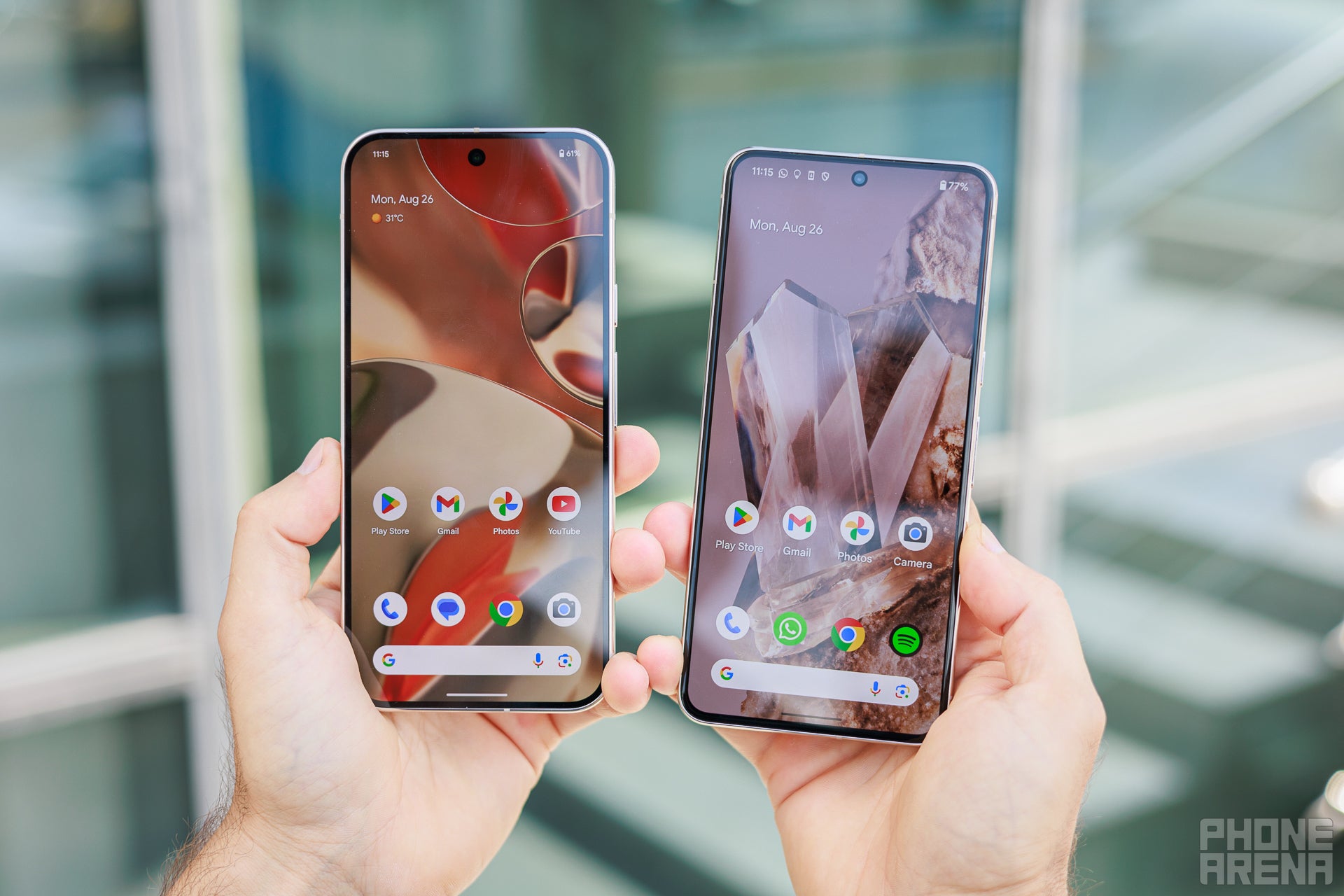
A much brighter screen is available on the Pixel 9 Pro XL (Image by PhoneArena)
The Pixel 9 Pro XL comes with a slightly larger 6.8-inch Super Actua OLED screen, which boasts a super-smooth 1-120Hz refresh rate and an extremely high brightness that reaches 3,000 nits. That's extraordinary! The screen is also an extremely high-res one, with a QHD+ resolution.
The Pixel 8 Pro screen isn't half-bad, either. It's slightly smaller at 6.7 inches and has a slightly lower peak brightness of just 2,400 nits, but otherwise, it's still a super smooth and beautiful OLED screen.
As per our benchmark tests, the Pixel 9 Pro XL has a more color accurate display that's also much brighter at over 2,000 nits of max brightness we've measured. That's a great upgrade over the Pixel 8 Pro, but this doesn't mean that the Pixel 8 Pro is in any way bad. It's just overshined by its high-profile successor., which delivers much higher peak brightness.
Why the discrepancy between our test and Google's claims? We measure maximum brightness on an all-white display (100% APL), whereas Google measures only 5% white on an otherwise all-black screen.
Just like its predecessor, the Pixel 9 Pro XL will have an in-display fingerprint scanner, but this time around, a major upgrade has been delivered to the Pixel 9 Pro XL. Finally, after years of using inferior optical fingerprint scanners, Google has caved in and put a proper flagship-grade ultrasonic fingerprint scanner inside.
Performance and Software
Two flavors of Tensors
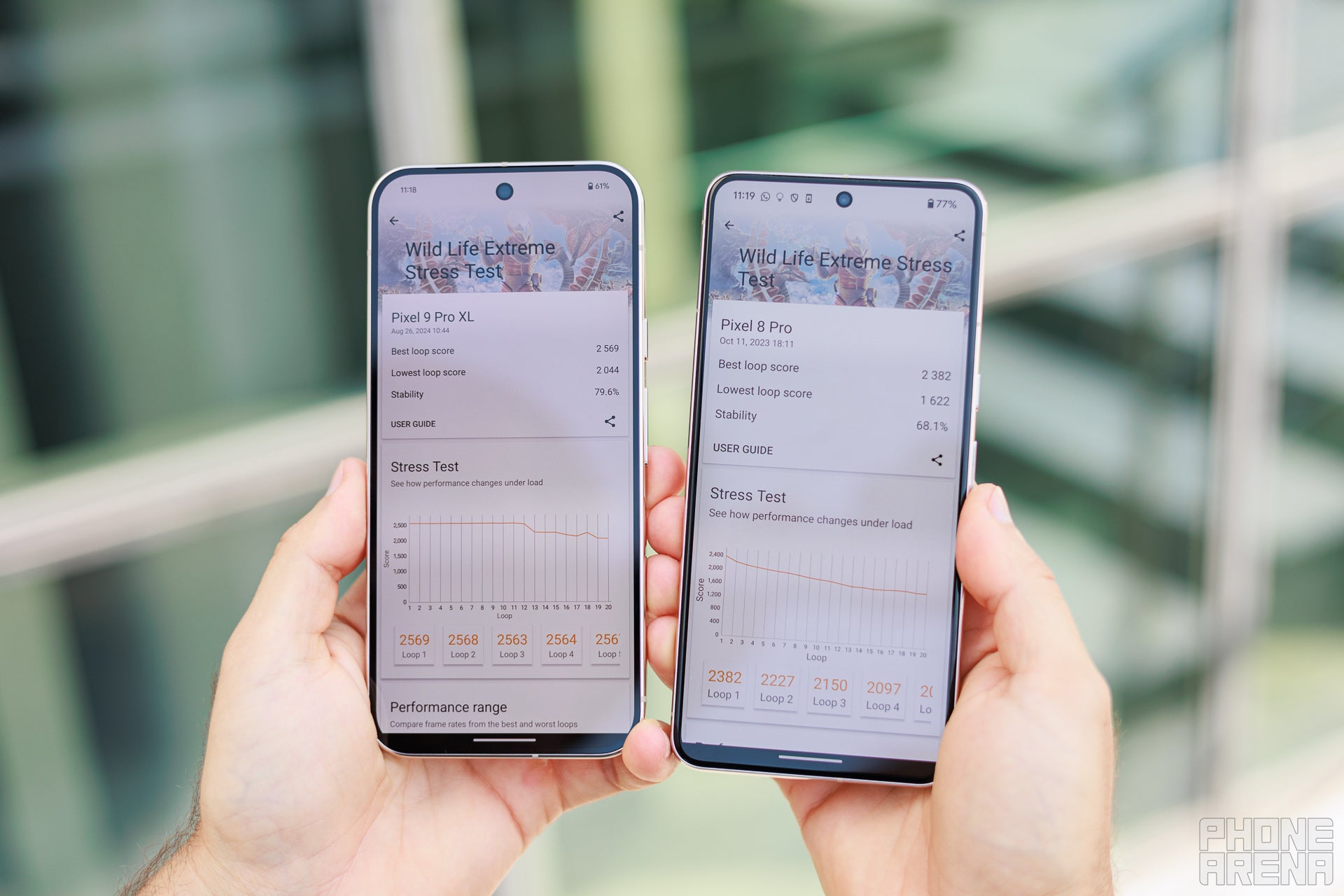
More than a decent performance bump (Image by PhoneArena)
The Pixel 9 Pro XL comes along with the Tensor G4 chipset, which is based on a 4nm manufacturing process, and once again shifts the focus towards on-device AI. The Tensor G4 is an octa-core chipset unlike the nona-core Tensor G3. The latter wasn't a benchmark-buster, but proved to be more than usable in everyday scenarios, so nothing to be concerned about.
It also runs Gemini Nano on-device, which unlocks the true potential of Google's AI.
| Tensor G4 | Tensor G3 | |
|---|---|---|
| Prime core | 1x Cortex-X4@3.1GHz | 1x Cortex-X3@2.85GHz |
| Performance cores | 3x Cortex-A720@2.6GHz | 4x Cortex-A715@2.35GHz |
| Efficiency cores | 4x Cortex-A510@1.95GHz | 4x Cortex-A510@1.7GHz |
The Pixel 9 Pro XL utilizes 16GB of RAM, which should provide tons of headroom for AI-related tasks, as these have high hardware requirements. The Pixel 8 Pro has 12GB of RAM on board. Storage-wise, the new flagship comes with either 128GB, 256GB, 512GB, or 1TB of available storage. That's the same as the Pixel 8 Pro.
According to our own in-house tests, the Tensor G4 does score a significant performance uptick in comparison with the Pixel 8 Pro's Tensor G3. We are seeing improvements in both the CPU-heavy Geekbench test, and the GPU-tasking 3DMark Extreme benchmark, which is great to notice.
As Google adopted a seven-year software support window with the Pixel 8 series, that one will be supported until the end of the decade. The Pixel 9 Pro XL, on the other hand, will receive software updates and feature drops until 2031, which is superb as far as support goes.
Interestingly, the Pixel 9 Pro XL comes with Android 14 out of the box and not Android 15. The latter will likely arrive at both the Pixel 9 Pro XL and Pixel 8 Pro soon.
Camera
Potential changes coming
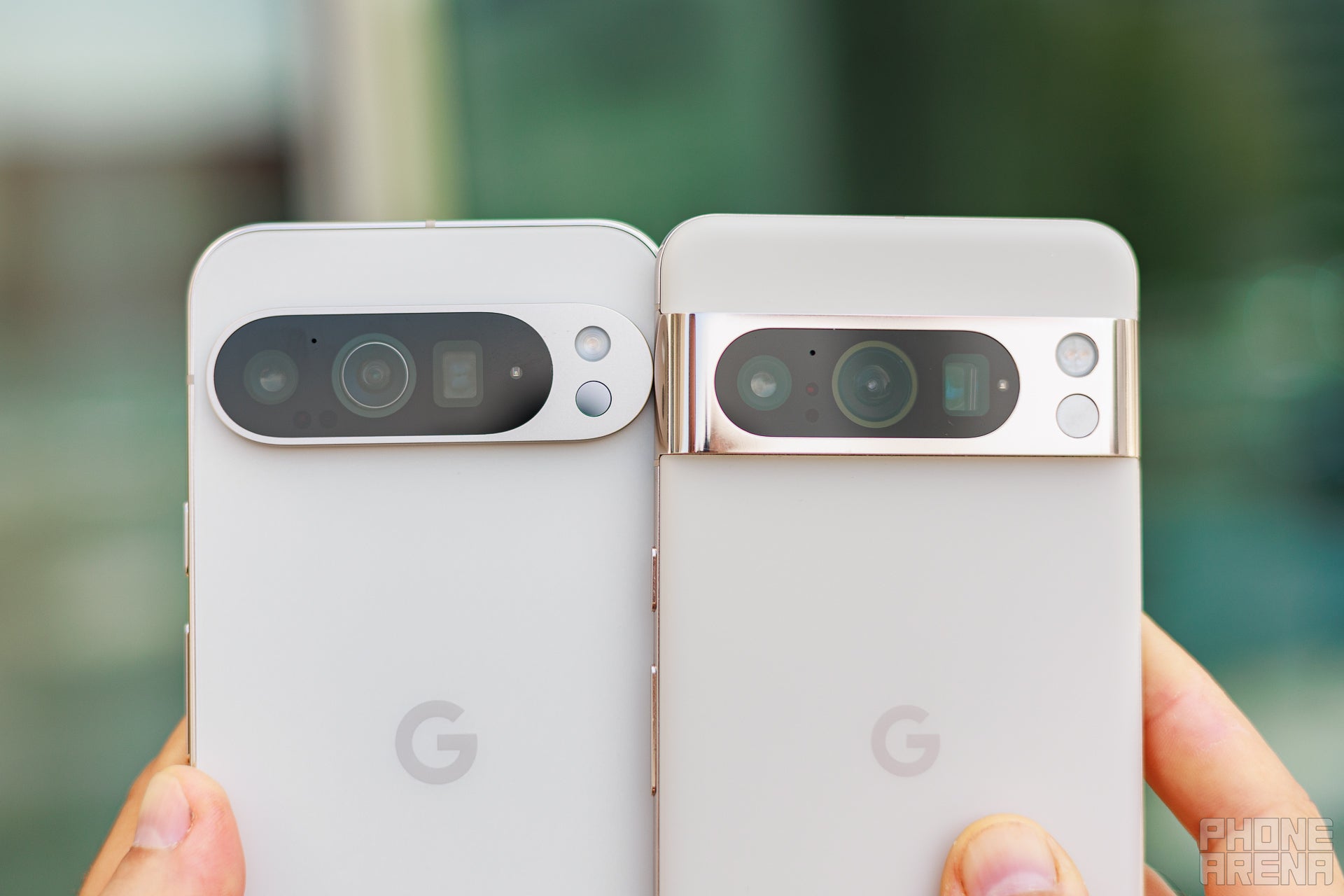
The Pixel's camera is always among the best ones around (Image by PhoneArena)"
The Pixel 9 Pro XL, on the other hand, comes along with a better camera setup. We get a 50MP main camera with an f/1.68 aperture and large 1/1.31" sensor. The ultra-wide and 5X telephoto are both 48MP cameras, with fairly large apertures of f/2.8 and f/1.7, respectively.
Despite lacking dedicated cameras for those specific zooms, the Pixel 9 Pro XL boasts optical-quality zoom at both 2X and 10X, thanks to sensor-cropping and hybrid zoom.
The Pixel 9 Pro XL also supports the following features: Pro controls, Add Me, Macro Focus, Night Sight, Astrophotography, Portrait Mode, Face Unblur, Long Exposure, Action Pan, Real Tone, Panorama, Top Shot, and Frequent Faces. Both devices also support the AI-powered Magic Editor, Magic Eraser, Best Take, Photo Unblur, Zoom Enhance, and Portrait Light.
The Pixel 8 Pro arrives with the same camera setup, but we expect that the new phone will deliver better image quality thanks to software improvements.
Also read: Google Pixel 9 Pro XL PhoneArena Camera Score: A great main camera, but the rest falls short
Battery Life and Charging
No changes expected

The Pixel 9 Pro XL doesn't have a much better battery life (Image by PhoneArena)
There's a 5,060mAh battery in the Pixel 9 Pro XL, while the Pixel 8 Pro came with a marginally smaller 5,050mAh one. That's a small difference in capacity, but the Tensor G4 could potentially be more efficient than the Tensor G3, so there could potentially be a battery life improvement.
As per the PhoneArena custom battery tests, the Pixel 9 Pro XL does have a better battery life, although not that much. Sure, the new phone scores around than three hours in our custom web browsing test, which simulates a basic browsing workflow with the display set at 200 nits, but the Pixel 8 Pro still achieves a better result in the video streaming test.
Finally, the battery life in our custom 3D gaming test are also mostly similar, with a slightly upper hand for the new Pixel. This is important to know for those who enjoy mobile games.
What about charging?
The Pixel 9 Pro XL comes with 37W wired and 23W wireless charging, a slight improvement over the 33W wired and 23W wireless charging on the Pixel 8 Pro. And that translates to a slight charging speed improvement.
Although the new phone charges only eight minutes faster than the older Pixel 8 Pro, the Pixel 9 Pro XL charges faster at both the 15- and 30-minute legs, which means that short charges throughout the day will give you better battery life.
Specs Comparison
Here's how the Pixel 9 Pro XL vs Pixel 8 Pro specs compare. Be advised that these are preliminary, so they can get changed.
| Specs | Pixel 9 Pro XL | Pixel 8 Pro |
|---|---|---|
| Dimensions | 162.8 x 76.6 x 8.5mm | 162.6 x 76.5 x 8.8 mm |
| Weight | 221gr | 213 g |
| Screen | 6.8" OLED HDR 1-120Hz 20:9 aspect ratio 2700-nit peak brightness | 6.7-inch OLED 120Hz |
| Processor | Google Tensor G4 (4nm) | Tensor G3 (4nm) |
| RAM, Storage and Price | 16GB/128GB 16GB/256GB 16GB/512GB 16GB/1TB | 12GB/128GB 12GB/256GB 12GB/512GB 12GB/1TB |
| Cameras | Main: 50MP, f/1.68 Ultra-wide: 48MP, f/1.7 Telephoto: 48MP, f/2.8, 5x optical zoom Selfie camera: 42MP, f/2.2, AF | 50MP main, f/1.7 48MP ultra-wide, f/1.9 48MP telephoto, f/2.8 5x zoom 10.5MP front |
| Battery Size | 5,060mAh | 5,050mAh |
| Charging Speeds | 37W wired 23W wireless | 33W wired 23W wireless |
Summary
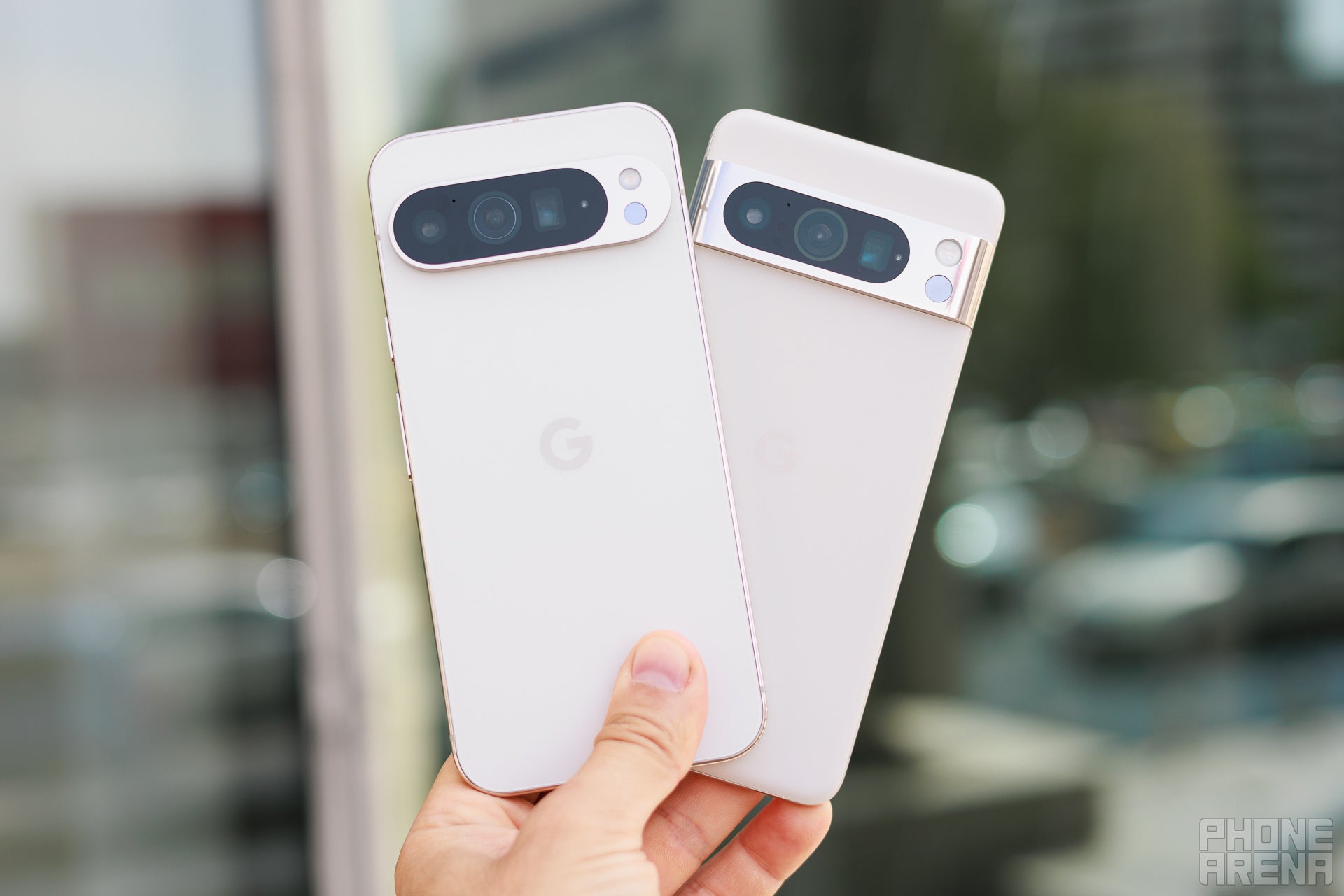
The Pixel 9 Pro XL is a wonderful phone, but probably don't upgrade from the Pixel 8 Pro (Image by PhoneArena)
The Pixel 9 Pro XL introduces sensible upgrades over the Pixel 8 Pro in most areas that matter. However, the evolutionary jump isn't that grand, so upgrading from the Pixel 8 Pro to the Pixel 9 Pro XL doesn't make a lot of sense.
Even if the new phone is better in many aspects (as it usually happens), the Pixel 8 Pro is still a mighty fine Android flagship, one that won't be outdated for years to come. Sure, it might not be the most future-proof when it comes to AI, but will match 95% of the same functionality the Pixel 9 Pro XL delivers.













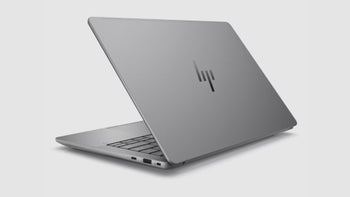

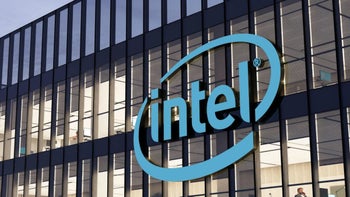
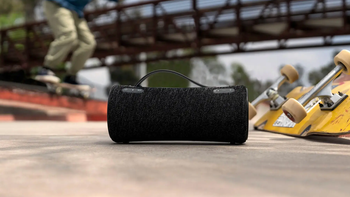
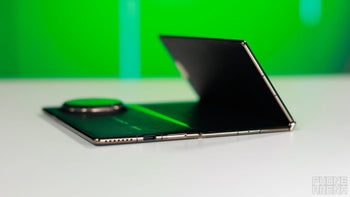







Things that are NOT allowed: